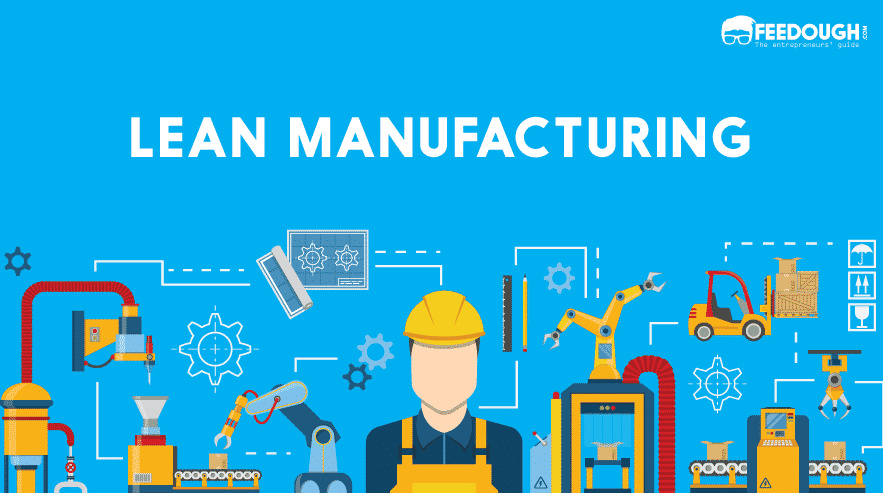What is lean manufacturing : The basic ground of lean manufacturing is around eliminating waste. Waste, in this context, is defined as anything that doesn’t add value for the customer. Value addition is any change in shape, form & function Lean.
Continual improvement is the ultimate goal. Lean manufacturing gives an organised path to work. This view was first introduced by Toyota around 70 years ago. The actual phrase “lean manufacturing” was first fabricated by MIT researchers in the 1980s, when they studied Toyota Production System (TPS).
The manufacturing industry has changed drastically since lean principles were first adopted. Automobile manufacturers and their suppliers perfected it for other industries to inspire them to join the league. But within a world that is increasingly becoming digital and virtual, is there still a place for lean manufacturing?
Given that we offer lean manufacturing support as a service, it is a big-‘YES’!
Is Lean Manufacturing a good idea? A simple answer? Because it works! Lean manufacturing is still being used by thought leaders across sectors &companies worldwide to realize their vision. It has entered the IT industry as well. Wipro started it back in 2000s.
The results are powerful. When the principles are applied correctly and adopted within an organisation, it continues to deliver improvements and savings for the lifetime of that company.
In today’s highly competitive and unpredictable global economy, lean is just as important as it ever was. Perhaps more so. Organisations today – now more than ever – are looking to optimize their operations. The aim is to give your customer what they want when they want is investing in optimum resources to get that done. Lean manufacturing still does that.
Ultimately, the results that lean can deliver remains vital to any business success.
Taking a fresh look at lean manufacturing
Here are some of the ways lean manufacturing can add value in the modern manufacturing environment:-
- Readjusting to a new workforce
One of the reasons lean is so powerful is because it gives importance to the participation and contribution from all the members of an organisation workers. At some places, the success it gives is because of the right attitude of people managing the systems and through a scientific approach of using the tools and techniques. This works well in addressing two challenges in the manufacturing industry. Firstly, lean enables the merging of the workforce across age and experience levels. This helps in utilizing the valuable skills of both, millennial and experienced professionals. Secondly, within flat management structures and with more independent, empowerment to younger workers drives the enthusiasm of the workforce. If “leaders” shift their roles to that of “mentor”, it is likely to result in a highly productive workforce.Look at the structure in sports industry, the mentor-men tee roles can be a benchmark for all kinds of work. The resulting empowered team, where the experience of production workers is being harnessed, contributes positively to the goal of continuous improvement. - Incorporating new technology
Embracing new technology is important for manufacturers to survive in today’s world. But incorporating new technology doesn’t always go as planned. In an era dominated by technology, lean can provide the best approach for selecting and incorporating technologies that deliver as promised. It encouragesshopfloor based data visualisation & problem solving in daily work justifyinig the true north than use of just financial management which are a macro & skewed view of looking at people’s efforts. - Enabling innovation
Innovation is essential for organisations to retain a competitive edge. As new ideas are tried and tested, understanding value from a customer’s point of view is essential to designing the product or the service. By understanding customer feedback, we can minimize the waste during the product development cycle. Thus,products or services can be created with ideal resources. Lean is also, sometimes synonymous to a frugal mindset because it fundamentally tries to save every useless effort. Lean mentors concepts can help guide their team while designing workflows keeping the waste in check, without restricting creativity and create the front for experimentation - Fulfillment in a demanding world
Lean manufacturing enables greater visibility of customers’ needs. When customers demand increased personalisation and delivery, lean has never been a more valuable tool to increase company-wide connection with that which customers value. Lean principles help manage the complications, minimize processes and optimizes resources. Through the process of waste reduction, one can reduce the manufacturing cycle time. This saves the organisation money and meets the expectations of customers. - Encouraging green manufacturing
There is an increased global focus on minimizing waste and pollution to make manufacturing more “eco-friendly”. Manufacturing companies are under pressure to find more renewable ways of managing a product life cycle. Environmental wastes and pollution have traditionally not been the main focus of lean production. But with a global shift towards this outlook, lean practitionershave started identifying waste of energy, water, air to optimize consumption of resources &promotesustainability. If you think your production processes could benefit from another pair of eyes, let's discuss lean with you in further detail. www.vedzen.com


Comments / 0